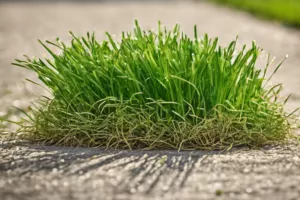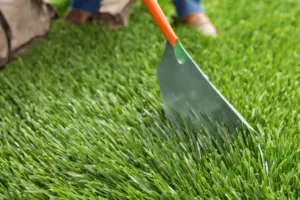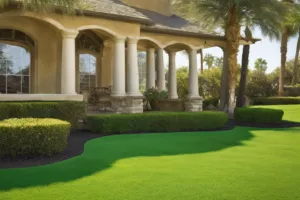
Understanding St. Augustine Grass and its Spreading Capabilities
St. Augustine grass, scientifically known as Stenotaphrum secundatum, is a popular turfgrass for lawns and commercial landscapes due to its lush and attractive appearance. A notable characteristic of St. Augustine grass is its ability to spread and cover large areas relatively quickly, making it a preferred choice for homeowners and landscapers looking to achieve a green, full lawn in a short period of time. This article will delve into the mechanisms that enable St. Augustine grass to spread, and offer practical tips on managing its growth.
How St. Augustine Grass Spreads
St. Augustine grass spreads primarily through a process known as vegetative propagation. This involves the growth of stolons, also known as runners, which are long, creeping stem structures that grow above ground and produce new grass plants at the nodes. These stolons enable St. Augustine grass to spread horizontally across the soil surface, filling in bare spots and creating a dense, carpet-like lawn.
Role of Stolons in Spreading
Stolons are a crucial component in the spreading ability of St. Augustine grass. Each node on a stolon has the potential to produce a new grass plant, which means a single stolon can generate multiple plants. The stolons extend outward from the parent plant, rooting at the nodes and forming new grass plants. This process allows St. Augustine grass to spread quickly and cover a large area.
Considerations for Specific Situations
While the spreading ability of St. Augustine grass is generally a desirable trait, it may pose challenges in certain situations. For instance, in gardens or landscapes with distinct zones or borders, the vigorous spreading of St. Augustine grass can lead to it encroaching on other plantings. Therefore, regular edging or the use of physical barriers may be necessary to maintain boundaries.
Shaded Areas
St. Augustine grass is known for its shade tolerance, which makes it a suitable choice for lawns with significant tree cover or other shading features. However, while it can survive in shaded conditions, its spreading may be slower compared to sunnier areas. It’s important to consider this factor when planning lawn establishment or expansion in shaded areas.
Tips for Managing St. Augustine Grass Spread
The way you manage your St. Augustine grass can influence its spreading rate and overall lawn health. Here are some practical tips:
- Mowing: Regular mowing at the correct height can promote the growth and spreading of St. Augustine grass. The recommended mowing height for this grass type is typically between 2.5 to 4 inches.
- Watering: Proper watering is crucial for maintaining a healthy St. Augustine lawn. Overwatering can lead to disease issues that may hinder the grass’s spread, while underwatering can stress the grass and slow its growth.
- Fertilizing: Providing the right nutrients can support vigorous growth and spreading. A balanced lawn fertilizer, applied as per the manufacturer’s instructions, can help maintain a lush, spreading St. Augustine lawn.
The spreading nature of St. Augustine grass, facilitated by its stoloniferous growth habit, is a key attribute that contributes to its popularity as a turfgrass. By understanding this characteristic and managing it appropriately, homeowners and landscapers can achieve beautiful, dense lawns with this grass type.

Bob Green, a passionate lawn care enthusiast with over two decades of landscaping experience, is this website’s proud owner. His vast knowledge of horticulture and dedication to helping homeowners maintain beautiful lawns are reflected in the valuable content he shares on his platform. John has always been interested in Agrostology.














